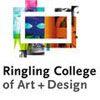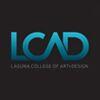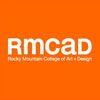
| Ranking | School | State |
|---|---|---|
| 1 | New York University | New York |
| 2 | Savannah College of Art and Design | Georgia |
| 3 | Southern Methodist University | Texas |
| 4 | The New School/Parsons | New York |
| 5 | Northeastern University | Massachusetts |
| 6 | Gnomon School of Visual Effects | California |
| 7 | Academy of Art University | California |
| 8 | Ringling College of Art and Design | Florida |
| 9 | Columbia College Chicago | Illinois |
| 10 | The Ohio State University | Ohio |
| 11 | Champlain College | Vermont |
| 12 | Laguna College of Art and Design | California |
| 13 | College for Creative Studies | Michigan |
| 14 | Woodbury University | California |
| 15 | George Mason University | Virginia |
| 16 | Cleveland Institute of Art | Ohio |
| 17 | Rocky Mountain College of Art and Design | Colorado |
| 18 | Lawrence Technological University | Michigan |
| 19 | Bradley University | Illinois |
| 20 | University of Connecticut | Connecticut |
Below are the Top 20 Game Design schools and colleges offering Bachelor of Arts (BFA) degree programs for 2018. For an explanation of ranking criteria, click here.

Founded in 1965, Tisch School of the Arts is part of New York University (NYU) and home to the NYU Game Center, Department of Game Design. Also known as Tisch or TSOA, the school has more than 3,000 students enrolled in games, animation, film, interactive media, acting, dance, design, performance, writing for musical theatre, stage, screen & television, preservation, recorded music, photography, and public policy programs.
The NYU Game Center, Department of Design offers a Game Design BFA. The program is organized in three primary areas including Game Studies, Game Design, Game Development, and four production areas including Programming, Visual Design, Audio Design, and Game Business. Students may specialize in Game Programming, Visual or Audio Design, or Game Development.
The Game Design BFA prepares graduates for a career in game design or for graduate study at the NYU Game Center or other program.

Savannah College of Art and Design (SCAD) was founded in 1978. With campuses in Savannah, Atlanta, Hong Kong, and Lacoste, France, SCAD is home to nearly 13,000 students from around 50 states and 115 countries. The school offers more than 40 majors and 60-plus minors, including a BFA in Interactive Design and Game Development (IDGD).
Offered through the School of Digital Media, the BFA consists of the SCAD Core—a series of foundation studies and general education courses, focused on developing critical thinking and communication skills; 15 hours of free electives, and two concentration options including Game Development or Interactive Design and Physical Computing. Sample courses for the program include Programming, Interactive Design and Game Development Studio, Game Art, Game Tech, Visual Design for Interactive Media, Physical Computing, Interactive Web Design, Information Architecture, and Social Media Applications.
The BFA is offered at the Savannah, Atlanta, and Hong Kong campuses.

Founded in 1911, Southern Methodist University (SMU) is home to nearly 11,800 students enrolled in 261 degree programs through seven schools. The Meadows School of the Arts offers several programs for aspiring game designers. Programs include a BFA in Digital Game Development and a BFA/Masters of Interactive Technology (M.I.T) in Digital Game Development. The BFA/M.I.T is supported by the Guildhall—SMU’s School of Video Game Development (est. 2003). BFA/MIT and MIT Specializations include Art, Design, Production, or Programming for Games.

The New School was founded in 1896 by American Impressionist William Merritt Chase. Back then, the school was known as The Chase School, and later as New York School of Fine and Applied Art. Today, known as The New School/Parsons, this art and design college is home to nearly 5,500 students enrolled in 130 degree and diploma programs across five schools including the School of Art and Design History and Theory, School of Art Media and Technology, School of Constructed Environments, School of Design Strategies, and the School of Fashion.
The undergraduate game design programs are offered through the School of Art, Media, and Technology (AMT). Options include a BFA in Design and Technology and a BFA in Art, Media, and Technology. The BFA in Design and Technology has a Game Design Pathway. The BFA in Art, Media, and Technology is offered at the Parsons Paris campus. This interdisciplinary program explores design, art, media, and technology, and prepares graduates to pursue careers in Animation, Game Design, Interactive and Social Media, Motion Graphics, and more.

Northeastern University was established in 1898. The school serves more than 30,000 students enrolled in over 150 undergraduate majors and concentrations and more than 125 graduate programs, across nine colleges and schools. BFA programs for aspiring game designers are offered through the College of Arts, Media and Design (CAMD). Options include a BFA in Digital Art and Game Design and a BFA in Games.
The school says that the focus of the BFA is to explore games as an aesthetic and expressive form through critical analysis and creative, reflective practice. Curriculum is geared to cultivating the students’ own unique creative voice through courses that apply theory analysis to game-making practice across a wide range of media. Students in the program are exposed to a wide variety of genres and contexts, as well as different ways of thinking about games content, platforms, and production.
Games majors will have a minimum of four games courses in which they interact with and collaborate with students in the BS in Computer Science and Game Development major.

Gnomon School of Visual Effects was established in 1997. The school, which has 600 graduates to date, offers a four-year Digital Production BFA. The school says that the BFA program is designed to produce production-ready artists who are versed in general academic knowledge, foundational arts, and production skills. Curriculum covers all aspects of a 3D generalist skill set, providing an in-depth understanding of the 3D production pipeline, and a strong foundation in both visual arts and general education studies.
Sample courses include elective options for enhancement in particular skills. Character Sculpture, Props and Weapons for Games, Character Animation, Game Creation, Character Rigging, Environment Design, Dynamic Effects 3 or Look Development, Visual Effects for Games, Houdini, Previsualization and Animatics, Texturing and Shading for Games, Maya Modules, and Creature Modeling and Sculpting.
The Digital Production BFA Culminates in the creation of a demo reel used to gain employment.

Academy of Art University was established in 1929. The school serves more than 7,200 students enrolled in dozens of Art, Design, Fashion, and Architecture programs. Degrees are offered at both the undergraduate and graduate levels, and many programs are available entirely online. The School of Game Development offers a BFA in Game Development. The school says that this multidisciplinary program provides a well-rounded education in the arts with an emphasis on understanding and applying techniques including 3D modeling, animation and lighting in video game production.
The Game Development BFA at Academy of Art prepare students for positions such as game designer, 3D modeler, concept artist, UI/UX designer, and many others.

Established in 1931 by circus baron John Ringling, Ringling College of Art and Design (RCAD) opened with just 75 students and 111 course offerings. Today, the school is home to 1,400 students, offering BFA degrees in eleven disciplines and BA degrees in two. Just a few majors include Game Art, Computer Animation, Motion Design, Film, and Visual Studies.
Programs for game designers are part of the Computer Animation Department, which boasts eight state-of-the-art computer labs in addition to three open labs. Game Art students are also experimenting with VR technology using the Oculus Rift and the HTC Vive. Degree options include a BFA with a Game Art Major, which is one of the few programs available that focuses on visual art for computer games. Students in the program will study “the basics of game design mechanics, meaningful play, interactivity, and options for creating and refining game content.” The technical aspects of 3D animation software and game engines will also be explored.
Other program highlights include visiting artists from major game studios such as Blizzard Entertainment, Epic Games, and Riot Games, and internships at these studios and others such as Electronic Arts, Insomniac Games, and Sony Online Entertainment. Graduates of RCAD enjoy a high professional placement rate as well.

Established in 1890, Columbia College is home to just over 7,000 undergraduate students and 285 graduate students from nearly every state and more than 60 countries. The school has over 100 academic majors or programs across several schools and more than 20 departments. Schools include the School of Media Arts, the School of Fine and Performing Arts, and the School of Liberal Arts and Sciences.
The BFA program for aspiring game designers is offered through Columbia’s School of Media Arts, Interactive Arts & Media (IAM) Department. The program, a BFA in Computer Animation with a Game Art or Game Design Minor, helps students develop the skills needed to seek positions in cinema, television or interactive gaming. Students can choose a minor to refine their focus. The Game Art Minor instructs students on how to use a variety of software tools to create sophisticated visual concepts for games and simulations.
The Game Design Minor is a comprehensive track that teaches students to design games in terms of gameplay, fun, user experience and system design. Students will learn advanced theory and use state-of-the-art techniques and tools to create engaging, immersive game experiences. The curriculum for all programs requires students to work collaboratively with students in multiple disciplines.

Established in 1870 as Ohio Agricultural and Mechanical College, The Ohio State University offers over 200 majors, minors and specializations. The school’s College of Arts and Sciences’ Department of Art offers a BFA with an Emphasis in Art and Technology. According to the school, “an emphasis in Art and Technology allows students to focus on the creative use, misuse, and investigation of technology in an art-making practice.”
“Students engage the meaning and material of science and technology through the production of interactive installations, electronic objects and interfaces, moving images, 3D modeling and animation, art games, tactical media, bio-art, performance, digital imaging, rapid prototyping, holography, Internet art, sound, and emerging forms.”
Students in the program “are encouraged to consider content, contexts, and approaches that may not fit within traditional definitions of art or display venues. Advanced technologies are explored as creative tools and as agents, which can lead to the production of new meaning, ideas, and artistic invention, all central to contemporary art.”

Established in 1878, Champlain College serves more than 2,200 students from 44 states and 18 countries. The school offers more than 80 subject areas, including undergraduate majors, minors and specializations as well as online and on-campus graduate degree programs and certificates. Champlain has four academic divisions including the Division of Communication & Creative Media, Robert P. Stiller School of Business, the Division of Education & Human Studies (EHS), and the Division of Information Technology & Sciences.
The Division of Communication & Creative Media offers a BFA in Creative Media with Game Media and Interaction Design Specializations. Creative Media students have the option to choose one primary and two complementary specializations to enhance their degree. They may also choose a Game Programming Minor.
An important aspect of the Game program is the collaborative environment of the school’s Game Studio. Here, Creative Media students work with counterparts in Game Art & Animation and Game Design as well as Game Production Management to build games from start to finish. The Game Studio replicates a professional game development setting to give students a firsthand understanding of how creative teams collaborate to develop individual game assets and coordinate them into a functional product.
All students have the opportunity to study abroad in Montreal, Canada, with internship opportunities at the Montreal Game Summit and the Montreal International Game Developers Association. Recent internship opportunities (outside of the Canada options) include Microsoft Game Studios and Wired Magazine.
Students may also participate in the Game Development Senior Show where students present games they create with their Game Studio team to recruiters from all over the East and Canada, including Square Enix/Eidos, Gameloft, Warner Bros./Turbine, Behaviour and Activision/Vicarious Visions.

Established in 1961 as the Laguna Beach School of Art, Laguna College of Art and Design (LCAD) serves more than 600 students and it offers twelve undergraduate majors and four graduate degrees.
LCAD offers a project-based BFA in Game Art that highlights a collaborative environment, partnerships with USC’s graduate program (GamePipe), among others, and exclusive access to teachers and mentors that come from Blizzard Entertainment, Sony Online Entertainment, Appy Entertainment, Double Helix, Obsidian Entertainment, NCsoft Carbine Studios, Insomniac, and Highmoon.
The school says that students may choose to further develop and perfect their skills through industry internships that apply theory to real world situations. Additionally, the Game Art program hosts workshops that have featured such inspirational giants as Steven Huston and Nathan Fowkes.

Founded in 1906, the College for Creative Studies (CCS) is home to more than 1,300 students enrolled in over a dozen degree programs across 14 academic departments. Serving 285 students, Entertainment Arts is the school’s largest department. Here, aspiring game designers can earn a BFA in Entertainment Arts with a Focus in Games, Animation, or Digital Film.
Games teaches students how to produce 2-D and 3-D images and concepts for video games. As a complement to the program, students may choose coursework from other areas or a Minor in Animation & Digital Media, Illustration, Fine Arts, or Visual Culture.
All BFA students will take 126 credit hours: 84 in studio areas and 42 in general studies courses. The school says that in addition to coursework in their chosen major, first-year students take courses in the Foundation Department, where they study drawing, color theory and basic design. Students in all majors also take courses in the Liberal Arts Department, designed to provide them with an understanding of the larger social and cultural context in which they live.

Founded in 1884, Woodbury University is one of the oldest institutions of higher education in Southern California. The school serves more than 1,500 students enrolled in 20 practice-based, professional and liberal arts undergraduate and graduate majors across three schools including the School of Architecture, the School of Business, and the School of Media, Culture & Design.
The School of Media, Culture & Design at Woodbury University offers a BFA in Game Art & Design with Concentrations in Game Design or Game Art. Because the School promotes cross-disciplinarity as a core attribute of the school, BFA students may also study in other areas such as animation, media technology, filmmaking and others.
Regardless of concentration, says the school, the Game Art & Design program teaches how to “conceptualize and develop video games from scratch.” In addition to game design, students will study topics in animation, computer technology, sound design, and story development.
Games students must complete an internship to graduate. Past internships have included such as Microsoft, Nickelodeon Animation Studios, Code Headquarters, and IMAX Corporation. Past internships for BFA students have included positons at Insomniac Games, Activision Blizzard, Disney, Skydance Interactive, Nexon, and many others.

George Mason University (GMU) was initially founded as a branch of the University of Virginia in 1949. The school became an independent institution in 1972. Today, GMU serves 34,000 students enrolled in hundreds of programs across 10 colleges and schools. The Volgenau School of Engineering at George Mason University (GMU) is home to the Department of Computer Science, which offers a BFA in Computer Game Design.
The school says that the program is designed to reflect the gaming industry’s demand for an academically rigorous technical program coupled with an understanding of the artistic and creative elements of the evolving medium, the course work draws from a number of fields of study, including computer science, visual arts, digital arts and computer music.
Sample game courses include Computer Game Design, Game Programming I and II, Computer Graphics, Digital Art and Animation, Three Dimensional Digital Art, Visual Computing, Computer Systems and Programming, and Advanced Programming Lab. Other program highlights include a required internship and participation in game program events, special activities, game design competitions, and projects hosted in the Computer Game Design Research Studio.

Cleveland Institute of Art (CIA) is an independent college of art and design that serves 615 students from around the globe. Established in 1882, the school offers 15 majors in Art, Craft, Design, and Interactive Media. The school offers a collaborative BFA in Game Design. The school says that Collaboration is a vital aspect of the studio experience at CIA. As a Game Design major in the college’s Integrated Media Environment, students will part of the digital arts student community and take core courses with students from other majors in the Environment.
The school explains that this regular exchange between students with differing perspectives and techniques helps build team skills integral to brainstorming, character design, narrative ideas, production, and presenting and critiquing project outcomes. Students will also improve their character development abilities, master the use of rule design, play mechanics, and social game interaction, integrate visual, audio, tactile, and textual elements into a total game experience, and create both linear and non-linear media by applying post-production techniques.
Additionally, Students will learn how to create 3D modeling digital visualizations that use processing, organic and inorganic modeling, construction of compound objects, 3D primitive construction and modeling, and resolution and tessellation of 3D objects and formats.

Rocky Mountain College of Art and Design (RMCAD) was founded 1936. It serves 775 art and design students enrolled in 16 degree and certificate programs. Just a few program options include 3D Animation, 3D Character Animation, Graphic Design, Illustration, Design Processes and Production, Fine Art, and Game Art.
The BFA in Game Art is offered on campus and online and it prepares students for a variety of careers such as Game Designer, Concept Artist, 3D Character Modeler, Motion Graphics Designer, Rigger Animator, and Interactive Media Designer, to name a few. Students in the program are required to take 51 credits of core classes, one three-credit elective, 21 credits of foundation courses, and 48 credits in liberal arts. Sample courses include Digital Painting for Film + Games, Game Animation + Motion Capture, Game Creation Fundamentals, Game Particles + Effects, 3D Modeling, 3D Computer Animation Motion Studies, and Character + Level Design.

Founded in 1932, Lawrence Technological University (LTU) serves approximately 4,500 students representing 25 states and 50 countries. The school offers nearly 100 associate, bachelor's, master's, and doctoral programs in the Colleges of Architecture and Design, Arts and Sciences, Engineering, and Management. The BFA program for aspiring game designers (a BFA in Game Art) is offered through the College of Architecture and Design (CoAD).
The BFA is a project-focused, multidisciplinary program that incorporates an Integrated Game Studio sequence that the school says acts as a platform for professional practice, bringing together the University's disciplines in order to produce and release games within the curriculum itself. Sample courses for the program include 3D Animation, Game Mechanics, Scripting for Game Design, Computer Games and Animation, New Media, Electronic Methods for Imaging, and Life Drawing.
Graduates of the program will leave with a full-fledged game release.

Founded in 1897, Bradley University is home to 5,400 students enrolled in more than 185 undergraduate programs and 30-plus graduate programs across eight colleges and schools. Slane College of Communications & Fine Arts is home to the Department of Interactive Media, which offers a BFA in Animation & Game Design. Sample courses for the program include Game Art, Concepting and Storytelling for IM, Drawing, 3D Animation, Game Production, Critical Issues in Interactive Media, Animation for Games, Interactive Media Design, and Introduction to Scripting Languages.
Besides a well-rounded curriculum, BFA program highlights include guest speakers, internship opportunities, and access to the Interactive Media, Animation Research, and Game Design Research Labs. Students also have access to the InterMedia Center and they have the opportunity to present a project at the department’s year-end show, FUSE.

The University of Connecticut (UConn) was founded in 1881 by brothers Charles and Augustus Storrs as Storrs Agricultural School (SAS). At the time, SAS was a two-year vocational school, which eventually became Storrs Agricultural College, and began officially admitting women. Today, UConn serves more than 32,000 students enrolled in 113 majors, 90 research and professional practice fields of study, and six professional degree programs across 14 schools and colleges.
The School of Fine Art at University of Connecticut (UConn) is home to the Digital Media and Design, which offers a BFA in Digital Media with a Concentration Game Design and Mechanics. Students are required to take the foundation curriculum, which consists of Digital Foundation, Animation Lab, Fundamentals of Web Design, Digital Culture, Motion Graphics I, Critical Perspectives of Digital Media, Student Agency (2 semesters), and Design Lab.
Sample Game design courses include Intro to Digital Game Design, Virtual Worlds & Simulations, Stories in Video Games, Advanced Digital Game Design & Development, Game System Design, Multiplayer Game Development, Disruptive Technologies, and Advanced Game Scripting.
Besides a variety of course offerings, the program offers internship opportunities at places such as Disney, Boston Interactive, and Rocket Software and participation in DMD Club, After Effects Club, and Video Game Club.

